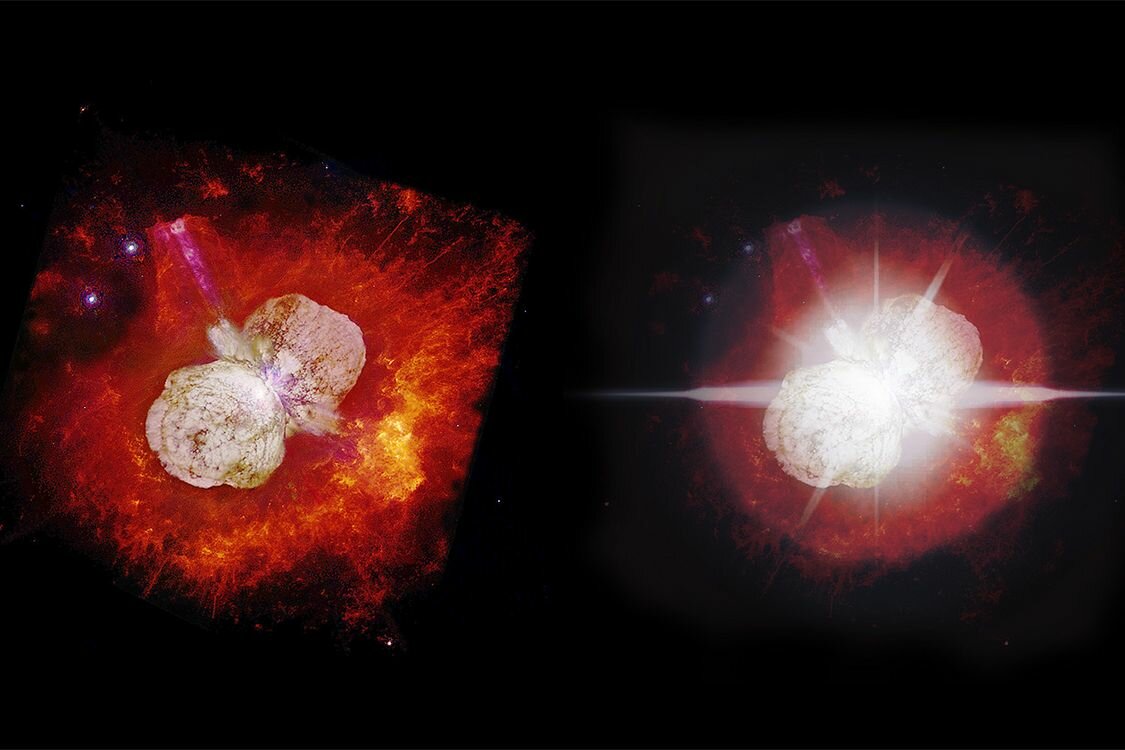A view of Eta Carinae by NASA's Hubble Space Telescope in 2000. (R) What the star could look like in 2032, when it overshadows its nebula.
January 30, 2019 by Jeff Heinrich, University of Montreal
For over a century and a half, Eta Carinae has been one of the most luminous – and most enigmatic – stars of the southern Milky Way.
Part of its nature was revealed in 1847, when, in a giant eruption, it ejected a nebula called the Homunculus (“little man”). The event made Eta Carinae the second-brightest star in the sky after Sirius, visible even in broad daylight and (later) easily distinguishable from other, similarly unstable stars called Luminous Blue Variables, whose nebulae are not so clearly visible.
Aside from making Eta Carinae one of the most beautiful and frequently photographed objects in the night sky, the giant Homunculus contains information about its parent star, ranging from the energy of its expansion to its bipolar outflow and chemical composition.
In as little as a decade from now, however, we will no longer be able to see the nebula clearly.
A recent study indicates that the Homunculus will be obfuscated by the increasing brightness of Eta Carinae itself. So rapidly is it growing, in fact, that in 2036 the star will be 10 times brighter than its nebula, which in the end will make it indistinguishable from other LBVs.
Good news
But there’s an upside.
A team of 17 researchers led by Brazilian astronomer Augusto Damineli, with input from Université de Montréal’s Anthony Moffatt, believe that the increasing brightness of Eta Carinae is not intrinsic to the star itself, as is commonly believed. In fact, it is likely caused by the dissipation of a dust cloud positioned exactly in front of it as seen from the Earth.
For the full original article read more at: https://phys.org/news/2019-01-goodbye-beauty-night-sky.html#jCp

